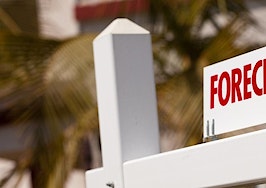- Single-family rental growth has slowed in the high-end tier as of May, while the lower end of the market has remained strong throughout the nation, at 5.3 percent annual growth.
- California was home to the largest pool of foreclosures along with Florida, but California's foreclosed inventory sat at only 0.4 percent.
- The California Home Price Index increased 6 percent annually in June, and the forecast shows year-over-year prices are expected to climb by 9.6 percent in 12 months.
CoreLogic’s Market Pulse for August 2016 reports on the national market and local trends, including a new inside look at the rental sector. Similar to the data company’s CoreLogic Home Price Index (HPI) and CoreLogic Case-Shiller Index, the new Single-Family Rental Index (SFRI) measures the growth of the rental market since January 2007.
After a massive growth spurt at the tail end of 2009 and into 2011 and steady growth that continued for a few years after, the SFRI shows rental price gains have recently begun to soften.

Rent growth peaked at 4.6 percent in December 2014 over the previous year, but as of May, the growth rate was 1.2 percent lower, at an annual uptick of 3.3 percent. Following a similar pattern to that seen in the homebuying market, the rental market has seen a slow-down in the high-end sector as of recently, while lower price points are holding their own.
Rent prices at the lowest end of the spectrum were up 5.3 percent in May over the previous year, marking a three-year growth trend around 5.5 percent. At the high end of the market, rentals were up 2.1 percent annually.

Throughout the nation, single-family rental demand is moderating after years of sharp increases, and tight credit conditions are likely to keep that demand hot, particularly in the low- and mid-range price points.
Los Angeles was home to largest growth in the single-family rental market among the 10 largest sectors studied by CoreLogic. The Southern California city saw a 5.4 percent growth rate in May from a year prior.
Current housing market trends
Boomerang buyers — homebuyers returning to the market after losing a foreclosed home — have slowly but surely made their way back into the real estate market. Looking ahead to 2017, the return of boomerang buyers has the potential to be strong, the report says.
CoreLogic reports the year is nearing seven years from the foreclosure crisis peak in 2010, which means that the ‘black mark’ of foreclosure will be officially erased from consumer credit reports.

CoreLogic reports on the hardest hit locations for boomerang buyers that returned by 2013. The three highest states for boomerang buyers — Arizona, Nevada and Michigan — saw 32 percent of its foreclosed homeowners come back to action in the market, compared to a 22 percent national average.
California is doing pretty well in terms of its foreclosed inventory and the return of boomerang buyers, CoreLogic says. The state has a foreclosure inventory of 0.4 percent. Along with Florida, California had the highest total of foreclosures, but the state saw 24.8 percent of boomerang buyers return.

California housing market trends

The Home Price Index growth is strong in California, and conditions point in the positive direction going forward. As of June 2016, the annual increase for the state was 6 percent. Month-over-month in the state, home prices increased 0.2 percent.
By June 2017, home prices are expected to increase at an even faster pace. The CoreLogic forecast has prices increasing 9.6 percent in one year.













